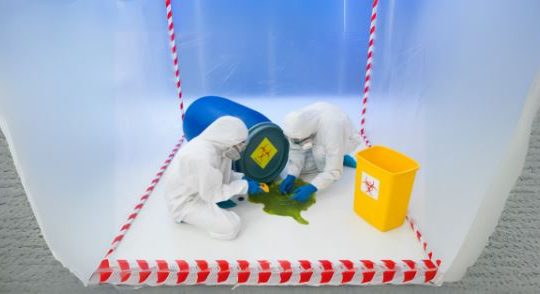
Level 5 Industrial Safety Culture Transformation and Leadership
Course Overview
The Level 5: Industrial Safety Culture Transformation and Leadership course is designed for senior professionals who are responsible for driving safety culture change within industrial organizations. This advanced program provides participants with the skills and knowledge needed to transform organizational safety culture and develop leadership strategies that foster safety as a core organizational value. Through the application of leadership techniques, behavior analysis, and continuous improvement models, this course prepares individuals to lead safety culture initiatives that create lasting change and enhance overall safety performance.
Benefits
- Culture Transformation Skills: Learn how to effectively lead and manage safety culture change within industrial environments.
- Leadership Development: Gain advanced leadership techniques to influence and inspire safety improvements across all levels of the organization.
- Enhanced Safety Performance: Understand how cultural shifts can reduce accidents, injuries, and operational disruptions.
- Career Growth: Strengthen your leadership profile for senior positions in health, safety, and environmental management.
Learning Outcomes
By the end of this course, participants will:
- Understand the principles and components of a strong industrial safety culture.
- Develop strategies for initiating and sustaining safety culture transformation within an organization.
- Apply leadership techniques to influence positive safety behaviors across teams and departments.
- Design and implement safety culture assessments to identify gaps and areas for improvement.
- Leverage performance data to monitor the effectiveness of safety culture transformation initiatives.
Study Units
- Introduction to Industrial Safety Culture
- The significance of safety culture in industrial settings.
- Key elements that contribute to a positive and resilient safety culture.
- Leadership Strategies for Safety Culture Transformation
- How leaders can drive cultural change by modeling safety behaviors.
- Building trust, engagement, and accountability to foster a culture of safety.
- Behavioral Approaches to Safety Culture
- Analyzing and addressing behaviors that impact safety performance.
- Implementing behavior-based safety programs to support culture change.
- Measuring and Assessing Safety Culture
- Tools and techniques for assessing the current safety culture within an organization.
- Developing and conducting safety culture surveys and audits.
- Continuous Improvement and Safety Culture Sustainability
- Strategies for embedding safety culture improvements into daily operations.
- Monitoring, measuring, and refining safety culture transformation efforts.
Career Progression
This qualification is ideal for individuals seeking advanced roles in industrial safety leadership, such as:
- Safety Culture Transformation Leader: Lead initiatives to foster safety culture changes at an organizational level.
- HSE Director: Oversee and drive health, safety, and environmental strategies with a focus on culture development.
- Safety Leadership Consultant: Advise organizations on implementing effective safety culture transformation programs.
- Senior Safety Manager: Manage safety teams and lead efforts to enhance organizational safety performance.
Our assessment process is designed to ensure every learner achieves the required level of knowledge, skills, and understanding outlined in each course unit.
Purpose of Assessment
Assessment helps measure how well a learner has met the learning outcomes. It ensures consistency, quality, and fairness across all learners.
What Learners Need to Do
Learners must provide clear evidence that shows they have met all the learning outcomes and assessment criteria for each unit. This evidence can take different forms depending on the course and type of learning.
Types of Acceptable Evidence
Assignments, reports, or projects
Worksheets or written tasks
Portfolios of practical work
Answers to oral or written questions
Test or exam papers
Understanding the Structure
Learning outcomes explain what learners should know, understand, or be able to do.
Assessment criteria set the standard learners must meet to achieve each learning outcome.
Assessment Guidelines
All assessment must be authentic, current, and relevant to the unit.
Evidence must match each assessment criterion clearly.
Plagiarism or copied work is not accepted.
All learners must complete assessments within the given timelines.
Where applicable, assessments may be reviewed or verified by internal or external quality assurers.
Full learning outcomes and assessment criteria for each qualification are available from page 8 of the course handbook.
Top Courses
No results found.
Related Courses
Let's Get in touch
Deleting Course Review
Course Access
This course is password protected. To access it please enter your password below:



